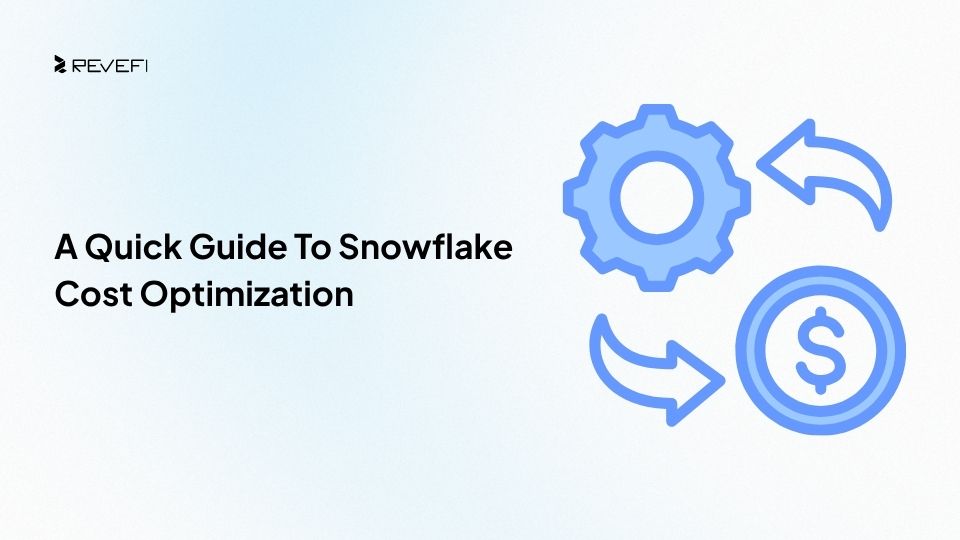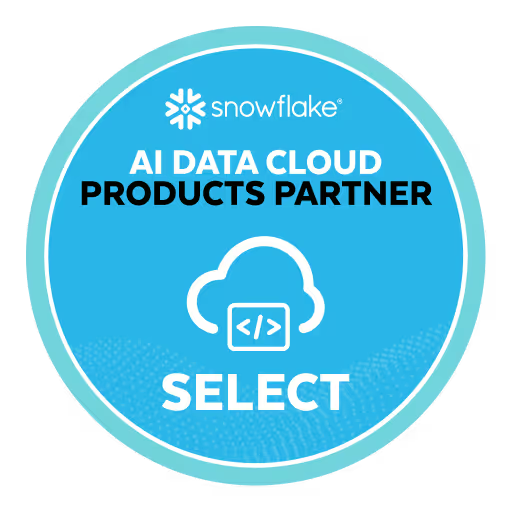Snowflake has cemented itself as the leading contender, and powerhouse in the cloud data platform arena by enabling organizations to store, process, and analyze vast amounts of data with unparalleled scalability and flexibility.

However, while innovative, Snowflake's pay-as-you-go model can lead to unexpected cost escalations if not managed proactively. To truly master Snowflake cost management, one needs to get a clear grasp of its consumption-based pricing structure. Snowflake's cost model is consumption-based, with costs driven by:
- Compute (virtual warehouses, data ingestion, etc.)
- Storage
- Cloud services (metadata, security, optimization)
And the currency? Snowflake Credits. The cost per Snowflake credit depends on the:
- Edition (Standard, Enterprise, Business Critical)
- Region
- Cloud provider
Editions like Standard, Enterprise, and Business Critical add features such as encryption and compliance, influencing overall costs. For CFOs, forecasting involves analyzing historical usage via Snowflake's Account Overview, which provides high-level insights into credit consumption and trends.
Common Challenges, and Mistakes in Snowflake Cost Management
Rapid data growth, decentralized usage, and lack of visibility often lead to "bill shock." Many organizations struggle with Snowflake costs due to inherent challenges in its elastic model, which results in a common issue faced by data teams all over: overprovisioning.
Teams spin up large warehouses for sporadic tasks, forgetting to suspend them, resulting in idle compute charges. Adding to this misery are inefficient queries, which spill on to disk or queue excessively, consuming extra credits without adding any value whatsoever. On the flip-side, data teams sometimes encounter the issue of improper warehouse scaling, where rules over dedicated warehouses prioritize cost allocation over efficiency, leading to underutilization.
Data management errors compound issues. Aggressive auto-suspend settings disrupt workflows, causing frequent restarts that accumulate startup costs.
Neglecting access controls in cloud or data environments can have serious financial and operational consequences. Without proper restrictions in place, unauthorized or inexperienced users may unintentionally consume high-cost compute resources, overload databases, or misuse cloud services which not only inflate cloud bills, but also expose systems to risk.
[Example]:
An unrestricted user might initiate resource-intensive workloads that consume excessive server capacity, storage, or network bandwidth. These unchecked actions can inflate cloud bills and degrade system performance.
Performance tuning oversights, such as ignoring caching or materialized views, force repeated computations. Concurrency patterns, if unmanaged, cause queuing that extends execution times. CFOs must address these by fostering cross-team accountability:
Best Practices for Optimizing Snowflake Costs
Start with warehouse optimization: Right-size based on workload by using small warehouses for light queries and scaling dynamically with multi-cluster setups for concurrency. Implement auto-suspend after 5-10 minutes of inactivity and auto-resume to minimize idle time.
Also, query optimization is key! Encourage efficient SQL with joins, filters, and limits to reduce data scanned. Leverage caching layers (result, metadata, and local disk) to reuse computations. Use materialized views for frequent queries and clustering keys on large tables to prune micro-partitions, cutting scan times by 50-70%.

Implement governance: Set resource monitors to alert at 75-90% budget thresholds and enforce query timeouts. Role-based access controls restrict high-cost operations to authorized users. Automate with tools for dynamic scaling based on real-time metrics.
Finally, forecast using historical data and integrate with enterprise budgeting tools for proactive adjustments.
Advanced strategies include query routing to underutilized warehouses and AI-driven optimizations for workload patterns. Monitor via Snowsight's Cost Management Interface for breakdowns by user, warehouse, or query.
Real-world Snowflake Cost Management: AI-powered Cost Savings
Snowflake provides native tools like the Cost Management Interface in Snowsight for dashboards and alerts. Budgets and resource monitors offer granular control, while Cost Insights recommend fixes for inefficiencies.
Solutions like Revefi's AI Agent automates warehouse management and monitoring, delivering up to 60% savings through real-time adjustments and alerts.
Mastering Snowflake cost management empowers CFOs to drive efficiency and innovation. By understanding pricing, avoiding pitfalls, applying best practices, leveraging tools, and learning from cases, you can optimize spend and maximize ROI. Regular audits and team collaboration ensure sustained savings in this dynamic cloud era.
Verisk, a data analytics firm, partnered with Revefi to tackle rising Snowflake costs. By implementing automated warehouse management, they achieved 60% savings in one environment despite a 44% query increase, with overall 100%+ ROI.












